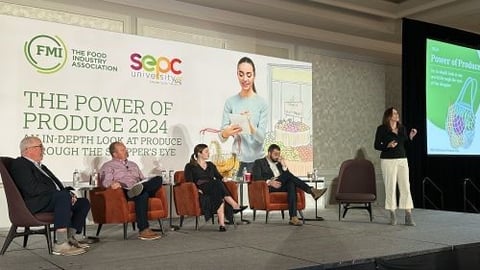Why Tropical Fruits Aren't Selling
Ask any grocer, and they will tell you the importance of properly marketing products at your grocery store. Food that is not put in the best position will not be sold, which is why grocers put so much effort into properly advertising and displaying the products they sell in-store. Grocers are usually exceptional at marketing produce, with the only exception being tropical fruits.
Except for well-known tropical fruits such as bananas and oranges, a majority of tropical fruits are not put in the best position to be sold. In my 30 years of experience working with tropical fruits such as papaya, I have spoken with countless grocers who say that they don’t want to buy more papaya or other tropical fruits because they don’t sell well, when in reality they would sell well if they were marketed better once they hit the shelf.
[RELATED: Genuine Caring Is Essential in Food Marketing]
It’s a self-fulfilling prophecy: We don’t bother marketing tropical fruits more because they don’t sell well, and they don’t sell well because they aren’t marketed well. If the food retail industry wants to sell more tropical fruits, we must put them in a better position to be sold. Here are a few tips for grocers to improve the way they market tropical fruits.
Pick Riper Tropical Fruits
When most grocers order tropical fruits, they typically order the fruit when it’s green. The less ripe a fruit is when you order it, the more time it can stay on the shelf before it has to be thrown out. A tropical fruit gets picked while it’s green and arrives at the grocery store around a quarter color. The fruit is then placed in a 50-degree refrigeration unit to hinder the ripening process.
A lot of grocers think they’re doing themselves a favor by buying green fruit, but in reality, they’re purchasing fruit that never ripens properly. If customers buy a bitter and unripe tropical fruit, they are less likely to buy it again. One of the best things grocers can do to ensure that they’re selling fruits that will ripen properly is to buy them at a quarter or half color, have them avoid refrigeration and hit the shelves right away. This ensures that your tropical fruits are ripening properly, and also makes the fruit look more appealing. Think about it: A half-color Hawaii papaya looks better than an unripe green papaya. At the end of the day, customers are going to buy fruit based on look and taste, and riper tropical fruits look and taste better.
[Never miss a story – sign up for Progressive Grocer's FREE Daily newsletter]
More Detailed Display Stands
Fruits are usually displayed together based on the subcategories they match. Berries are usually next to other types of berries, and apples are next to other types of apples. However, we don’t usually see these subcategories displayed with tropical fruits, which are usually all put together with only a label saying what type of fruit is in front of it.
Subcategories are very rarely used for tropical fruits, even though many tropical fruits have a variety of subtypes. There are six varieties of mangoes commonly seen at grocery stores. Grocers order papayas from Hawaii, Mexico, Brazil and the Caribbean, and each of them has a different look and taste. A display that lacks tropical fruit subcategories, such as type of fruit and origin, means that the customer will not get a consistent experience. If they find themselves enjoying an Alphonso mango or Hawaii papaya, they may be disappointed when they accidentally get an Ataulfo mango or red papaya next time. Just clearly marking these subcategories can make all the difference in increasing tropical fruit sales.
[Read more: Dole’s Tropical Fruit Portfolio Expands to Include Mangoes]
Grocers can also include more detail on what a tropical fruit tastes like, as well as how to prepare and serve it, and share some recipes in the display section. Many consumers won’t buy certain tropical fruits, because they simply don’t know how to eat them or what to put them in. Many people look at a jackfruit and say, “What do I do with this?” A simple explainer on a display saying how people can use a tropical fruit can help people get past the apprehension of buying it.
More Communication Between Distributors and Grocers
When it comes to tropical fruits, there isn’t enough communication between fruit distributors and grocers. We need to do a better job communicating with each other to ensure grocers are getting the tropical fruit they need and letting them know when certain tropical fruits are in season. Too many grocers are missing out on quality in-season tropical fruits because the two parties are not communicating enough past basic sales transactions. A papaya distributor will take an order when a grocer is looking to order papaya, but not enough of us are calling that grocer up when the fruit is in season and letting them know this is the best time to buy. Frequent communication between both parties will lead to breaking down many of the barriers preventing tropical fruit from being sold.
For example, a distributor and grocer talking can lead to the distributor figuring out that the grocer isn’t storing certain tropical fruits properly. The two parties can brainstorm ideas on how to better display certain tropical fruits. It’s in the interest of both parties for grocery store customers to buy more tropical fruit, so they should communicate and work together to put tropical fruit in a position to be sold. Local grocers and local distributors must build stronger working relationships that are cooperative and not just transactional.
Tropical fruit can drive sales at your grocery store, but grocers have to improve the way that they market tropical fruit. Simply improving how you buy and store tropical fruit and improving the way you display it can show customers that tropical fruits should be on their grocery lists.











